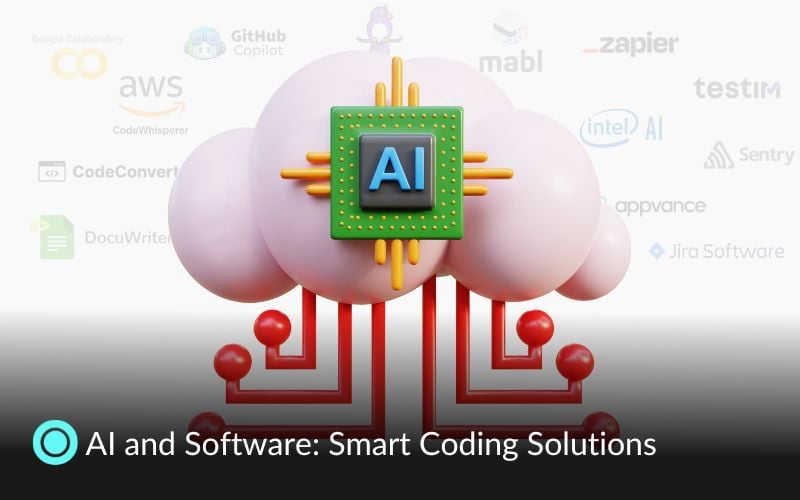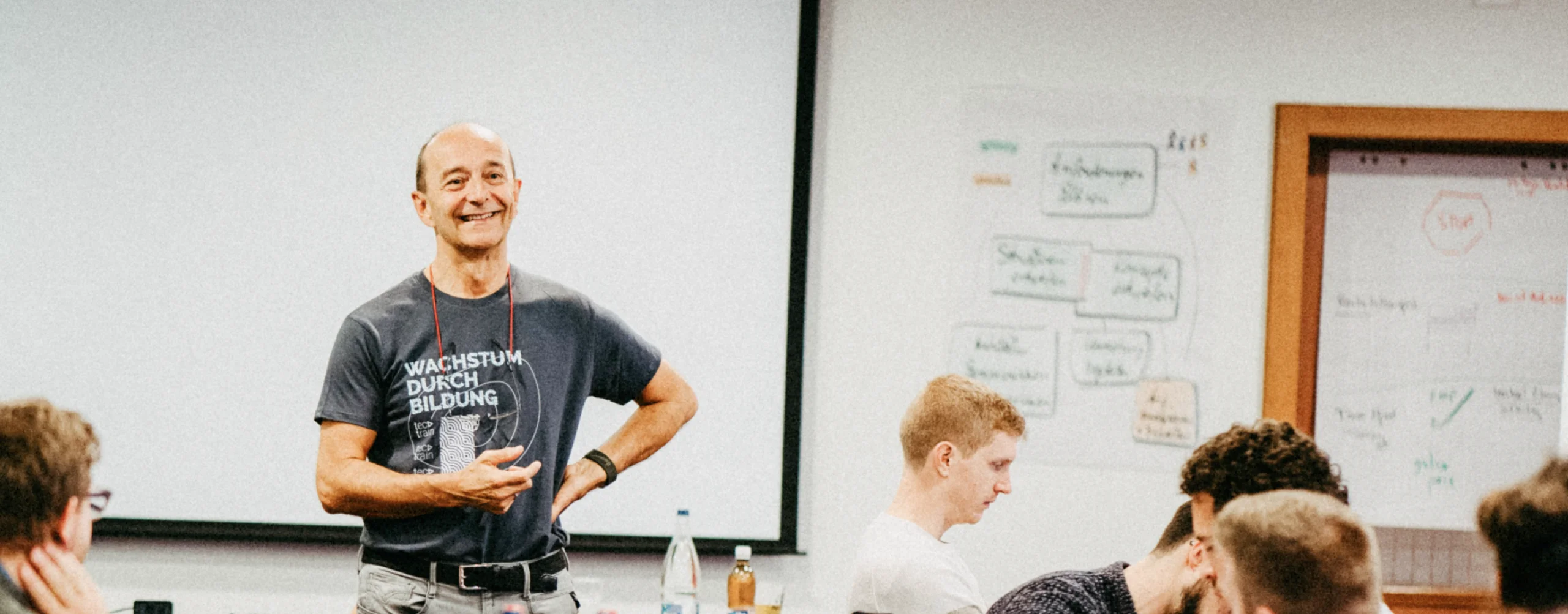Key takeaways
- AI-augmented software development brings AI into the picture to take care of the repetitive coding stuff and offer smart tips, making developers' lives easier and improving the quality of the software they build.
- In the IT world, AI augmentation means using artificial intelligence to handle the mundane tasks, make smarter decisions, beef up security, and spark new ideas and innovations in tech departments.
- In the field of engineering, AI steps in to automate designing, fine-tune engineering projects, carry out predictive maintenance and solve problems smarter with the help of machine learning and data analysis.
- The growth of AI-augmented development is showing us a trend where developers are turning more and more to AI tools. These tools help them code faster, cut down on mistakes, and come up with new software solutions quicker than ever.
- GitHub Copilot helps with writing code, Amazon CodeWhisperer assists in debugging, and tools like Intel ControlFlag are great at spotting mistakes in code.
AI Augmentation in IT: A Revolution in the Making
Imagine you're an artist with a canvas in front of you. Now, picture having a wise friend by your side, not to paint for you, but to whisper the perfect color blends, suggest new techniques, and even mix the paints. This friend is like the AI in AI-augmented software development. From the initial sketches (planning) to the final touches (testing), AI can identify areas that need reworking, ensuring the software's architecture remains robust and resources are used wisely.
According to insights from MIT Technology Review, we're at a turning point with generative AI. It's becoming a big deal for businesses everywhere, not just as a cool tech upgrade but as a whole new way to get things done, spark new ideas, and stay ahead in the digital world. At the center of this big change is AI stepping in to help out in IT departments, setting the stage for a future where work is smarter, productivity is through the roof, and companies run like well-oiled machines.

Here's how generative AI is shaking things up in IT:
- Taking Over the Tedious Stuff: Imagine not having to slog through routine data analysis or system checks because AI's got it covered. Even making tricky decisions could get a lot easier.
- Making Smarter Choices: With AI, digging through mountains of data for those golden nuggets of insight becomes a breeze, helping everyone from the ground up make sharper, more informed decisions.
- Boosting Security: AI's on the lookout, spotting and dealing with security risks by picking up on patterns we might miss, making it a game-changer for keeping things safe.
- Sparking New Ideas: When AI tools are there for everyone to use, it opens up a world of possibilities for innovation. It's all about giving everyone the chance to try new things and find better ways to work.
This isn't just a phase;it's the future of work as we know it, promising a world where businesses operate on a whole new level of efficiency and creativity.
The Exciting Surge of AI in Software Development
Gartner predicts that by 2027, 70% of professional developers will be using AI-powered coding tools, a significant jump from less than 10% today.
This insight from Gartner isn't just about how quickly AI technology is being picked up in the world of coding; it's pointing to a big change in the way software is made. It's similar to how digital tools have opened up new possibilities for what artists can create. AI in software development is stretching the limits of what developers can do. It's enhancing developers' skills, automating routine tasks, and giving them more time to focus on complex challenges and innovation.
Importantly, this shift underscores the idea that AI should augment human intelligence, not replace it, ensuring that technology serves as a partner to human creativity and ingenuity.
As developers become more skilled at using AI tools in their work, we can expect software that's not only built faster but is also smarter, more reliable and more in tune with what users need. The introduction of AI into software development is setting the stage for a new era of innovation, changing the landscape of software creation in a big way.
What Exactly Is AI Augmented Software Development?
Traditional software engineering focused on manual coding and development practices. For this reason, it was anticipated that the code development and testing processes of experienced experts would be reliable and efficient. With the introduction of AI into our lives, software engineers have gained the support of artificial intelligence that can be more productive, high-quality, and efficient.
Think of AI-augmented software development as having that clever friend in the world of coding. This friend, powered by AI, steps in to automate the grunt work and offer suggestions, much like choosing the right shade of blue for the sky. Tools like generative AI for code creation and AI-powered coding assistants are the brushes and palettes, automating routine tasks and suggesting improvements. This unique partnership allows developers to focus on the art of creating innovative software, enhancing their creativity and efficiency in the process.

AI’s Expanding Role in Engineering
By adding AI into the mix of software development, we're doing a lot more than just speeding things up; we're opening the door to a realm filled with new possibilities. This partnership is boosting how much developers can get done and is laying the groundwork for innovative software that could change the game. It's like having both an artist and a helper working together to create something truly special, with every line of code showing the amazing things we can do when creativity joins forces with the latest tech.
In AI-enhanced software engineering, we're bringing together machine learning(ML) and AI to make building software better and faster. This approach speeds up the whole process by taking care of the repetitive stuff and even makes the code itself more solid than the old way of doing everything by hand. AI tools are stepping in to help write code, sort out bugs, and put together documentation, marking a big move away from the old-school way of coding that depended a lot on manual work.
The Handy Tools of AI-Augmented Software Engineering
- Creating and Understanding Code
What's Out There: Think of GitHub Copilot, Amazon CodeWhisperer, and Google Codey as your coding sidekicks.
What They Do: These geniuses help you whip up code snippets or even whole apps just by telling them what you need. They dive into huge pools of code to find the best way to get things done, making coding faster and less of a headache.
- Fixing Bugs and Polishing Code
The Toolkit: Tools like Intel ControlFlag, Rookout, and Sentry are like having a super-smart bug detective by your side.
The Magic They Work: They're all about catching bugs and figuring out why your code's acting up, all without you having to dig through it manually. This means less time chasing down problems and more time making cool stuff.
- Writing the Docs
The Helpers: Tools such as DocuWriter.ai are here to take the chore of documentation off your hands.
How They Help: They're like your personal scribe, automatically putting together the manuals and help docs, so you can stay focused on the coding part.
- Translating Languages
The Tech: AI tools like CodeConvert help switch code from one language to another, making updates or changes a breeze.
The Benefit: They make it easier to give old systems a new lease on life without starting from scratch.
- Testing Made Easy
The Innovations: Tools like Appvance, Testim, and Mabl are changing the game in testing.
Their Superpower: They automate the whole testing ordeal, from planning tests to running them, which means fewer mistakes and more reliable results.
- Streamlining Routine Tasks
The Convenience: With AI tools like Zapier, even the boring stuff gets done without you.
The Upside: They handle the mundane tasks, like sorting emails or scheduling, so developers can keep their heads in the code.
- Keeping Projects on Track
The Organizers: Tools such as Jira Software are the brains planning your project's every move.
The Edge They Give: They look ahead for bumps in the road, helping manage your team's time and resources smarter.
In a nutshell, AI is lending a hand in every corner of software engineering, from the first line of code to the final tests, making the whole process smoother, smarter, and a bit more like having a super team by your side.
Concerns and threats
Commercial privacy and IP protection
In the world of software development, tools like GitHub Copilot, Amazon CodeWhisperer, and Google Codey are like buddies who hand you the perfect set of colors to paint your masterpiece. They're there to help you craft and understand code, switch languages effortlessly, and even give old software a new shine. But, just like an artist who carefully picks the next shade to use, developers have to take a close look at what these tools suggest to make sure everything turns out just right.
Meanwhile, when we talk about the nuts and bolts of software - things like data infrastructure and the tech that holds it all together, including cloud services or the latest in hardware like speedy GPUs - businesses are looking for setups that make the most of their data without skimping on safety or security. This is becoming even more crucial as the guidelines for keeping data safe and making the most of AI get more complex. For AI to really be for everyone, the underlying systems need to be easy to use, letting people ask questions or run complicated tasks just by talking to them.
However, using big AI systems that aren't built just for your business, like ChatGPT or Google Bard, comes with its own set of challenges. For instance, the things you ask these systems or the code you work on with their help might end up being used to make these products better, which could accidentally step on privacy laws or let out secret company info.
That's why some tech leaders are drawing lines around using these big AI platforms at work. Samsung, for example, stopped using ChatGPT after finding out employees were using it for projects with sensitive code. Other big names like JP Morgan Chase, Amazon, and Verizon have also put up their own set of rules or outright bans to keep their secrets safe.
Workforce worries
According to a report from MIT Technology Review Insights, generative AI has the power to take over or help out with 40% of the work hours across different fields, even in areas that need a lot of skill and creativity. This possibility of machines doing more of the work is making some people worried about jobs in IT, especially for those who usually handle everyday coding and keeping systems running smoothly.
As AI tools get better at tackling complicated coding jobs, there's a growing concern that the skills many IT folks have right now might not be needed in the future.The thought of having to constantly learn new things and keep up with all the latest tech changes can be pretty daunting for some, adding a layer of stress for those who might struggle to stay up-to-date.
The MIT Technology Review Insights report brings up some important concerns, and it's key to remember that AI is here to boost human smarts, not take over.By letting AI take care of the routine stuff, we can all focus on tackling the bigger, trickier problems and spend more time on coming up with new ideas and improving how we do things.
This doesn't mean we'll be left with a gap in skills. Rather, it shines a light on the constant need for imaginative, problem-solving IT folks who can use AI to get more done. Keeping up with the endless possibilities tech offers means always being ready to learn and seeing new challenges not as scary obstacles but as chances to grow.
With this mindset, we have the power to turn AI breakthroughs into real benefits, making sure AI boosts what we can do without overshadowing the special touch only humans can bring.
Conclusion
For leaders, figuring out where generative AI (GenAI) fits into their business now and in the future is a big challenge. They're trying to understand how to play around with GenAI projects effectively and get ready for the big changes and chances it's going to bring. As we move through the changing world of AI-enhanced software development, it's becoming clear that this isn't just a temporary trend.
It's a major shift in the way companies come up with new ideas, run their operations, and stand out from the competition. Bringing AI into software development and IT is starting a new chapter of being more efficient, creative and good at solving problems, which opens up amazing possibilities but also brings up issues like privacy, protecting ideas, and helping employees keep up.
Leaders need to figure out how to smoothly bring AI tools into their work, making sure these tools help more than they hinder. This means using AI not just for the boring stuff and sparking new ideas but also thinking about the bigger picture, like ethics and how widely AI is used.
By promoting a culture where everyone's always learning and ready to change, companies can really make the most of AI in software development. This could turn any challenges into chances to grow and innovate. Looking ahead, it's all about finding the right balance, taking advantage of what AI offers while carefully dealing with any problems that come up, all through smart planning and thinking ahead.





